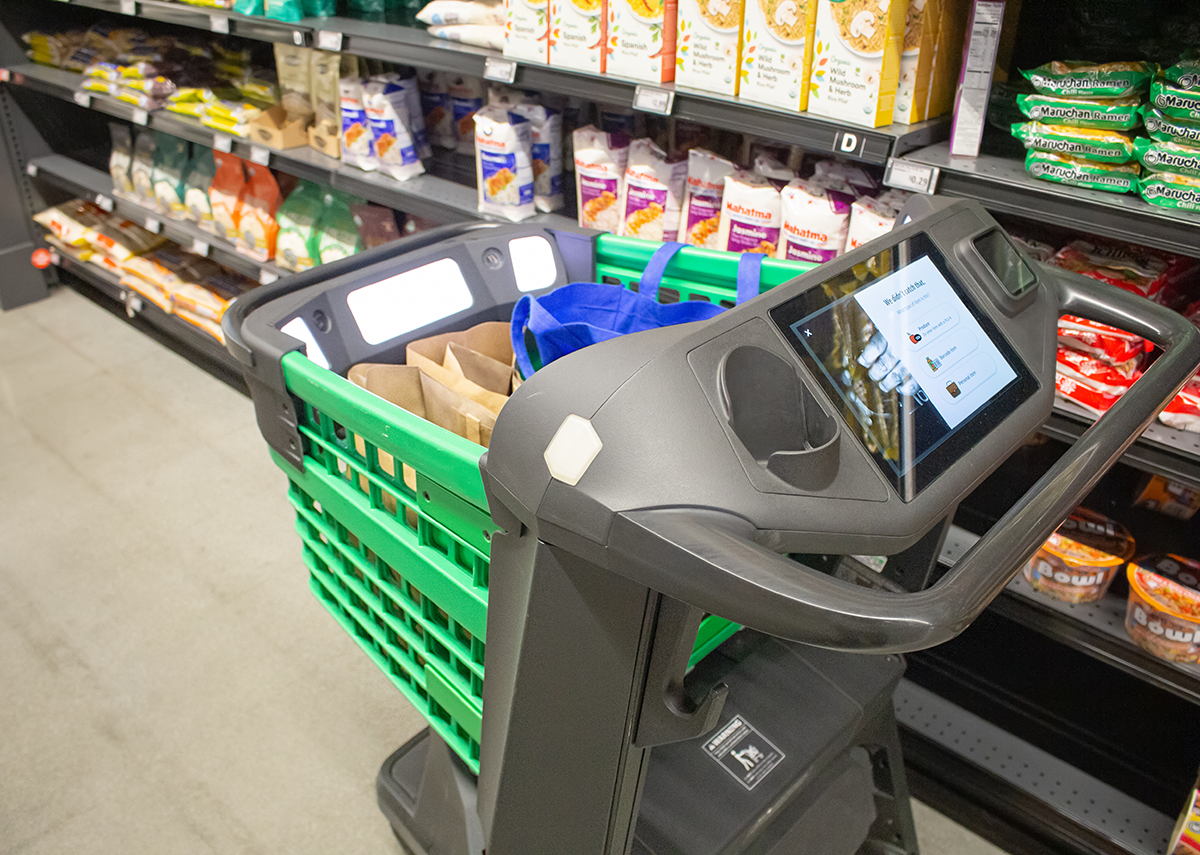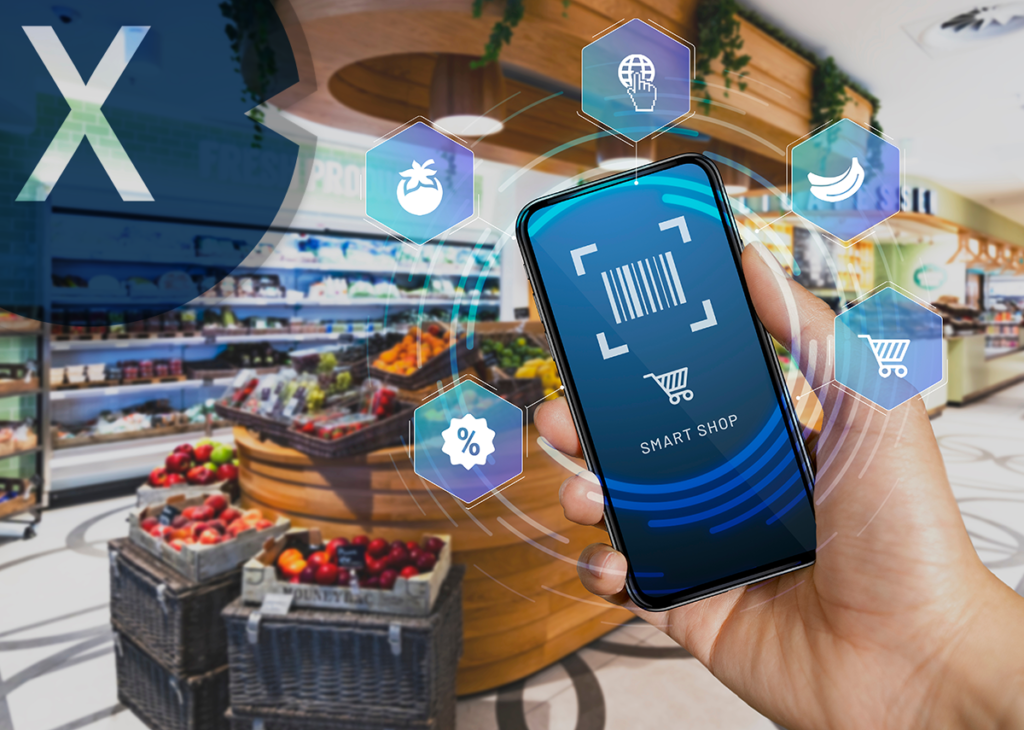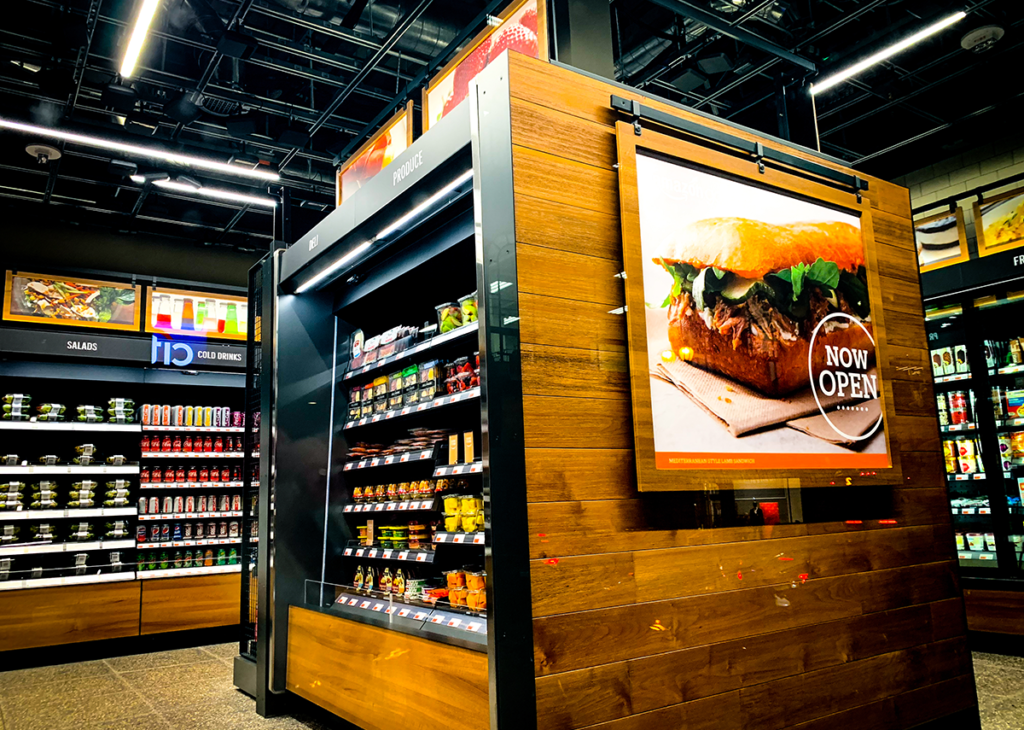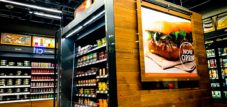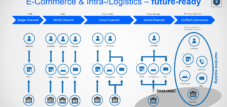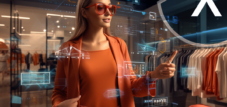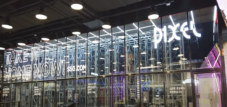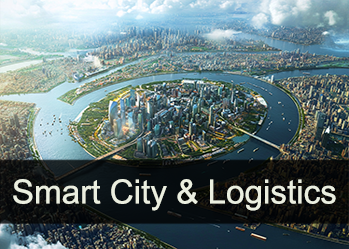Quick & Smart Shopping Tour Further development: Linking e-commerce with the Grab & Go concept (Unified Commerce)
Language selection 📢
Published on: November 4, 2023 / update from: November 4, 2023 - Author: Konrad Wolfenstein
🛒 The further development of e-commerce: unification of the Grab & Go concept (Unified Commerce)
🌐 E-commerce as we know it has undergone a remarkable transformation in recent years. To date, traditional online shop systems have difficulty meeting the omnichannel approach, in which customers can shop simultaneously in real time via different channels (online shop, physical stores, social media, mobile apps and more) due to an inadequate merchandise management system connection . An example of this is the challenge of immediately picking up products ordered online at a local store or branch. Often it is the e-commerce systems themselves that do not offer an integrated option for immediate purchase and direct collection.
🏪 The Grab & Go concept represents an innovative further development and solution to this problem. With this method it is necessary that the customer is already registered in the shop operator's system.
🔍 It may sound surprising, but many regional supermarkets have difficulty identifying their long-standing and most loyal customers, even though they shop regularly. They simply don’t know their customers. A well-known example of solving this problem is the Lidl app, which is a digital customer card with exclusive discounts and promotions that makes its customers visible and wants to get to know their shopping habits. This has advantages for both sides.
📝 This is similar to the Grab & Go concept, only here the possibilities for the future and customer loyalty are far greater. For smooth operations in a Grab & Go store, prior customer registration is essential. The customer not only enters their personal data, but also their preferred payment methods for future purchases - be it direct debit, credit card payment, purchase on account or other methods.
🛒 In an expanded scenario, the 24/7 Smart Shop, customers can order their goods either online, via a special app or directly on site - or both together. The payment system then works autonomously and carries out the payment process without human intervention. This offers advantages for both sides: customers enjoy a fast and convenient shopping experience without waiting times, while shop operators receive a detailed overview of their shop's performance. With such data, they can fine-tune sales strategies and maximize customer satisfaction. Waiting in line at the checkout is actually no longer necessary, as long as a coherent concept is found for the security of goods in the respective supermarket, discount store or for concepts such as Grab & Go, Just Walt Out Shops, Walk-In Stores or Pick & Go Shops . Solutions to this already exist.
Suitable for:
🌍 Until recently, combining a Grab & Go store with an online shop was unimaginable. This type of connection is still largely unknown in Europe. However, there is already an advanced implementation in South Korea with E-Mart's ARS (Autonomous Retail Systems). E-Mart, as one of the oldest and largest retail companies in South Korea, could serve as a model for the introduction of smart commerce (more on this in the next section) in our regions.
🌎 In Europe and North America there are only a few providers that promote the integration of e-commerce apps and physical shops. But it is only a matter of time before this model becomes the standard here too.
- For Europe itself, we currently only know of one e-shop and software provider!
🛍️ When you look at the benefits that the unified commerce model offers, it's clear why it is the future of shopping. It enables a seamless shopping experience for the customer by blurring the boundaries between online and offline shopping. For stores, it offers more efficient inventory management as they can respond to inventory changes in real time.
🌱 In addition to a more convenient shopping experience, the Grab & Go concept can also lead to more sustainable business practices. By minimizing waiting times and automating processes, stores can reduce their energy consumption and operate more efficiently.
🚀 The Unified Commerce model has the potential to fundamentally change the way we shop. By merging online and offline experiences, customers can enjoy a more convenient and efficient shopping experience, while stores benefit from increased efficiency and customer satisfaction. It remains to be seen how this trend will develop in the coming years, but one thing is certain: the future of e-commerce looks bright.
📣 Similar topics
- 1️⃣ Shopping cart revolution: The era of unified commerce 🛒✨
- 2️⃣ Omnichannel challenges and solutions in e-commerce 💻🔄
- 3️⃣ From the shopping cart to the front door: The future of Grab & Go 🏃💼
- 4️⃣ Smart Shopping 24/7: How technology is transforming retail 🕒🛍️
- 5️⃣ Customer loyalty through digitalization: The role of apps in retail 📲🔄
- 6️⃣ Personalized shopping experiences through Unified Commerce 🧍💳
- 7️⃣ E-commerce meets retail: The seamless transition 👥🌐
- 8️⃣ Sustainability and efficiency through automated retail systems 🌿⚙️
- 9️⃣ E-Mart's Role in the Global Grab & Go Trend 🌏🛍️
- 🔟 The new shopping revolution: Grab & Go and Just Walk Out Shops 🛒🚶
#️⃣ Hashtags: #UnifiedCommerce #OmnichannelRetail #GrabAndGo #SmartShopping #ECommerceEvolution
Autonomous Retail Systems – Autonomous systems for retail (Smart & Walk-In Stores)
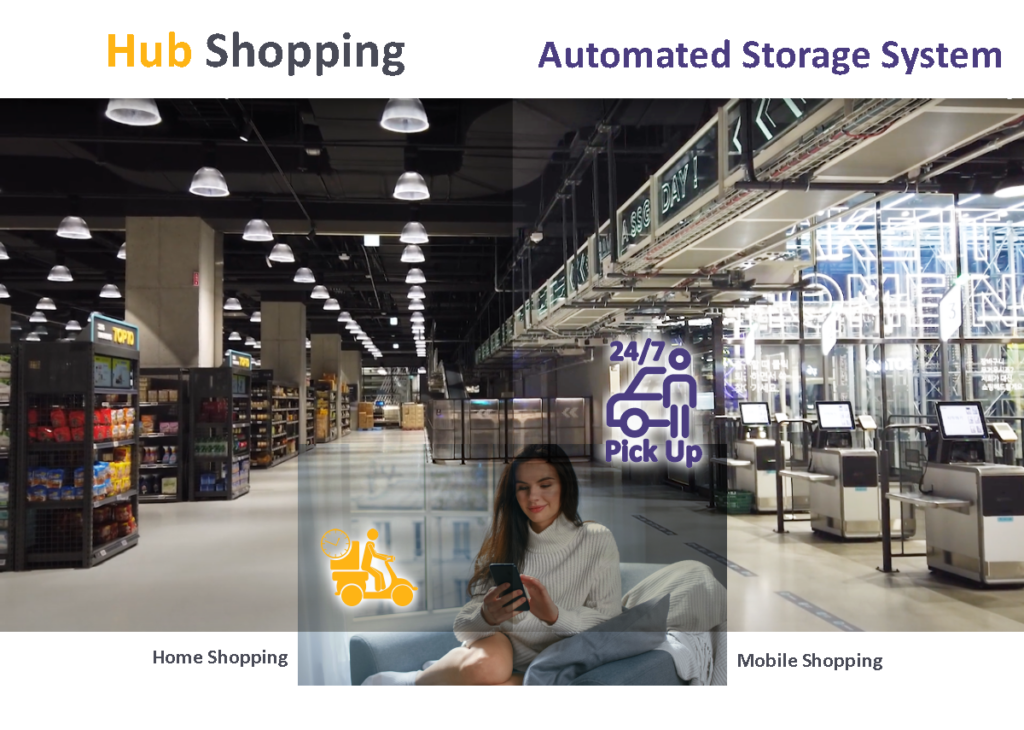
Autonomous Retail Systems (ARS) – Allowing the possible to do the impossible creates a new reality – Image: @xpert.digital
➡️ Autonomous Retail Systems (ARS) – Allowing the possible to do the impossible creates a new reality – expanding sales channels
The philosophical concept of autonomy was largely coined by the German philosopher Immanuel Kant: Autonomy depends on overcoming existing forms of dependence and heteronomy, even if these appear to offer a certain degree of security. Autonomy refers to the state of self-determination, independence, self-management or freedom of decision or action.
More about it here:
🛒 Retail sector in transition
The retail sector is experiencing rapid transformation, driven by the integration of digital and physical shopping experiences. Companies strive to create a seamless symbiosis between online and offline shopping, which is reflected in the development and implementation of various innovative concepts. These concepts include autonomous retail systems (ARS), hub shopping models, 24/7 smart shops, and the Grab & Go concept. Other examples include Just Walk Out Shops, where traditional checkouts are no longer required, Walk-In Stores, which enable immediate shopping without waiting times, and Pick & Go Shops, which offer a quick selection of goods without lengthy payment processes. All of these concepts are designed to ensure customers maximum convenience and efficiency when shopping.
- Autonomous Retail System (ARS)
- Hub Shopping
- 24/7 Smart Shops
- Grab & Go concept
- Just Walk Out Shops
- Walk-in store
- Pick & Go Shop
- and a few more
Strictly speaking, these are similar concepts, but are aimed at different focuses or scenarios.
🔌 Technology in retail
At the core of this wave of innovation are advanced technologies such as the Internet of Things (IoT), artificial intelligence (AI) and machine learning (ML). These make it possible to analyze shopping habits in real time, provide personalized recommendations and ultimately create a tailored shopping experience. By using IoT devices, retailers can monitor inventory and respond to changes in demand in real time. AI systems, in turn, are able to create sales forecasts and personalize the customer experience by analyzing large amounts of data. Machine learning helps predict customer behavior and optimize purchase recommendations.
🌐 Unified Commerce and customer integration
Unified Commerce goes one step further and describes an integrative trading strategy that strives for complete networking and synchronization of all sales channels. The goal is to collect and use customer data across all touchpoints to create a consistent brand experience, regardless of whether the customer is shopping online or offline.
Suitable for:
💡 Smart Shopping and Smart Commerce
Smart shopping and smart commerce are the actual umbrella term of all concepts and focus on the application of specific technologies and processes that enable this type of seamless integration. These terms emphasize the need to find innovative solutions aimed not only at selling products, but also at providing a complete and satisfying shopping experience.
🚀 The future of retail
This development illustrates how retail responds dynamically to the changing needs and expectations of customers. The modern consumer is no longer just looking for a product, but rather a holistic shopping experience that combines convenience, speed and personalization. Companies that are able to integrate these aspects through the skillful use of technology and data analytics will be leaders in the new retail landscape.
🤖 Technology in the physical store
To serve this demanding consumer landscape, retailers are investing in advanced point-of-sale systems that accept biometric payments, apps that use augmented reality to enable virtual try-ons, and robots that can not only handle warehouse tasks but also serve as shopping assistants. The physical store becomes a place for creating experiences where the customer not only purchases products, but also gains valuable experiences, which can be further enhanced through the use of interactive technologies such as touchscreens and smart mirrors.
🌐🚀 With 2D matrix codes, V-Commerce (virtual shopping) and others 🛒📲, the next market-influencing and changing developments are already knocking on the gates of smart commerce
Retail faces an exciting future in which the boundaries between online and offline continue to blur. Constant development and adaptation to technological innovations as well as understanding and anticipating customer needs are crucial to success in the retail sector of the future.
In keeping with this, we would like to point out the emerging developments in the area of smart commerce, particularly in connection with 2D matrix codes and virtual shopping (V-Commerce). These technologies have the potential to significantly transform retail and the shopping experience.
The use of 2D matrix codes, such as QR codes, allows consumers to quickly access product information, reviews and offers, making purchasing decisions easier.
More about it here:
V-commerce, which uses virtual reality (VR) or augmented reality (AR) for shopping, can provide a more immersive and personalized shopping experience. Customers can try products in a virtual environment before purchasing them, which can increase purchase satisfaction.
More about it here:
It will be exciting to see how these technologies evolve and how retailers will use them in the future to transform the way we shop. Do you have specific questions or would you like further information on this topic?
📣 Similar topics
- 🛒 The future of retail: Innovative concepts and technologies
- 🤖 Artificial Intelligence and IoT in Retail: A Revolutionary Change
- 🌐 Unified Commerce: The networking of all sales channels
- 🛍️ Smart Shopping and Smart Commerce: The future of shopping
- 💳 The evolution of cash register systems in retail
- 🌟 The physical store as a world of experience: Interactive technologies in retail
- 📲 QR codes in retail: Quick access to product information
- 🕶️ V-Commerce: Virtual reality and augmented reality in the shopping experience
- 🚀 The Future of Retail: How Technology is Transforming Shopping
- 🧐 The role of data analytics in modern retail
#️⃣ Hashtags: #Retail #Innovation #Technology #ArtificialIntelligence #IoT #UnifiedCommerce #SmartShopping #SmartCommerce #POS Systems #QRCode #VCommerce #ShoppingExperience
Smart Shops 24/7 & Stores 365: Closing supply gaps with Grab & Go technology, vending machines (regiomats) and checkout self-checkout systems
The introduction of Smart Stores 24/7 in Germany began in 2020 and has experienced rapid development since then. These innovative business concepts have revolutionized the traditional shopping experience and offer customers a completely new way of shopping. With their fully automated operation and ability to be accessible 24/7, Smart Stores have created high consumer appeal.
More about it here:
New shopping: The Grab & Go concept (Just Walk Out Shops / Walk-In Store / Pick & Go Shop)
The Grab & Go concept, also known as “grab-and-go,” has its roots in developing quick and convenient food solutions for people on the go.
More about it here:
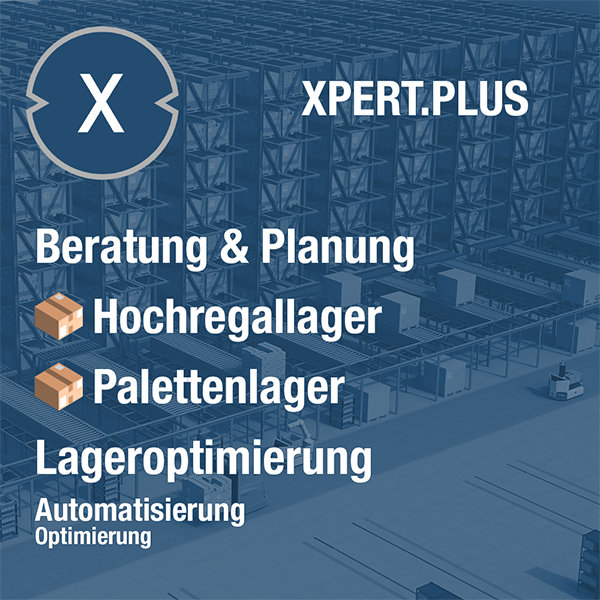
Xpert.Plus warehouse optimization - high-bay warehouses such as pallet warehouses consulting and planning
Plan your solar system for the most common applications conveniently online with our solar system planner!
With our user-friendly solar system planner you can plan your individual solar system online. Whether you need a solar system for your home, your business or for agricultural purposes, our planner offers you the opportunity to take your specific requirements into account and develop a tailor-made solution.
The planning process is simple and intuitive. You simply enter relevant information. Our planner takes this information into account and creates a tailor-made solar system that meets your needs. You can try out different options and configurations to find the optimal solar system for your application.
Additionally, you can save your plan to review later or share with others. Our customer service team is also available to answer your questions and provide support to ensure your solar system is optimally planned.
Use our solar system planner to plan your individual solar system for the most common applications and advance the transition to clean energy. Start now and take an important step towards sustainability and energy independence!

The solar system planner for the most common applications: Plan the solar system online here - Image: Xpert.Digital
More about it here:
We are there for you - advice - planning - implementation - project management
☑️ Smart City & Factory: Industry expert for energetic 5G buildings and halls as well as advice and installation of solar systems
☑️ Xpert.Plus - logistics consulting and logistics optimization
☑️ Industry expert, here with his own Xpert.Digital Industry Hub with over 2,500 specialist articles
I would be happy to serve as your personal advisor.
You can contact me by filling out the contact form below or simply call me on +49 89 89 674 804 (Munich) .
I'm looking forward to our joint project.
Xpert.Digital - Konrad Wolfenstein
Xpert.Digital is a hub for industry with a focus on digitalization, mechanical engineering, logistics/intralogistics and photovoltaics.
With our 360° business development solution, we support well-known companies from new business to after sales.
Market intelligence, smarketing, marketing automation, content development, PR, mail campaigns, personalized social media and lead nurturing are part of our digital tools.
You can find out more at: www.xpert.digital - www.xpert.solar - www.xpert.plus



